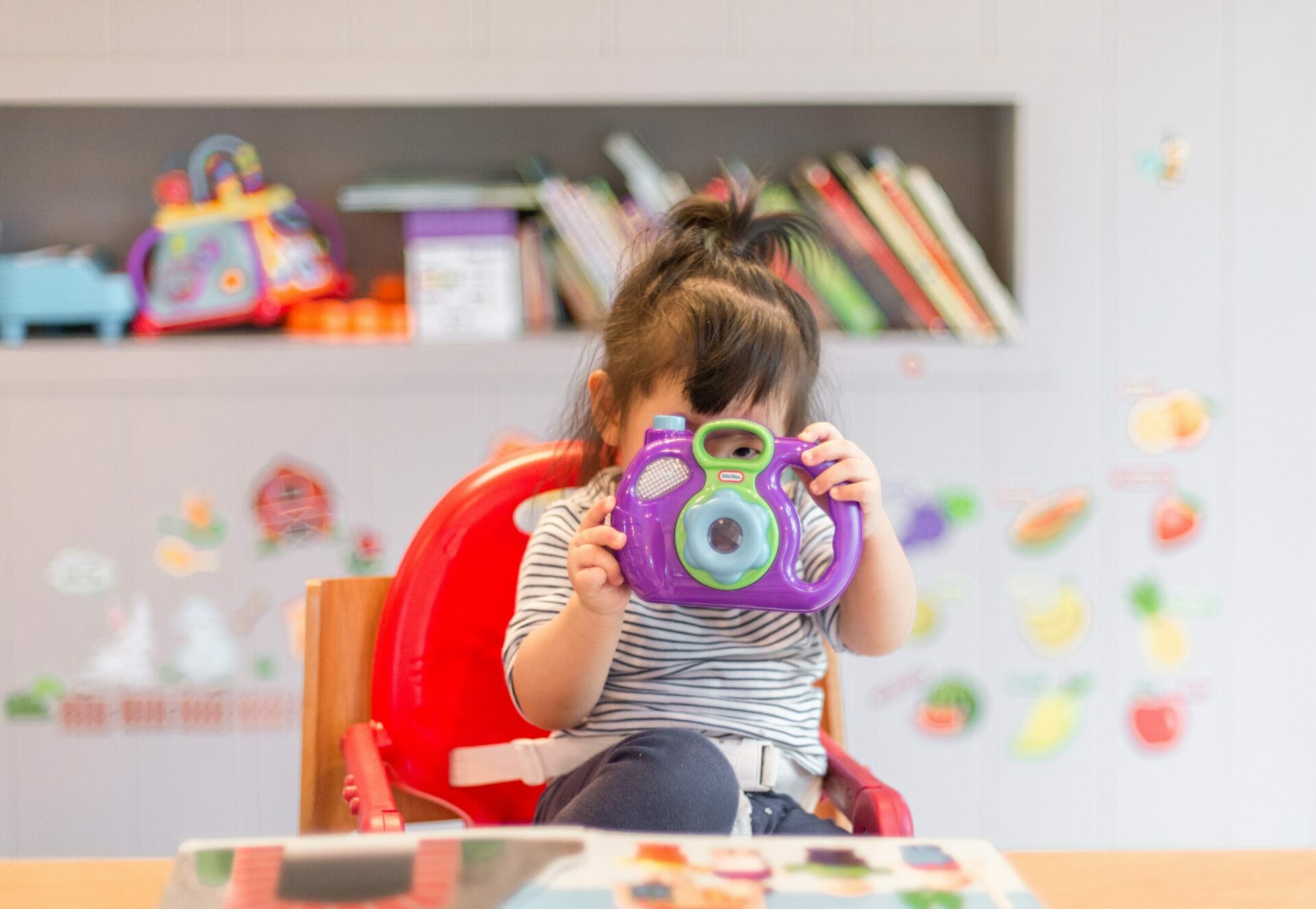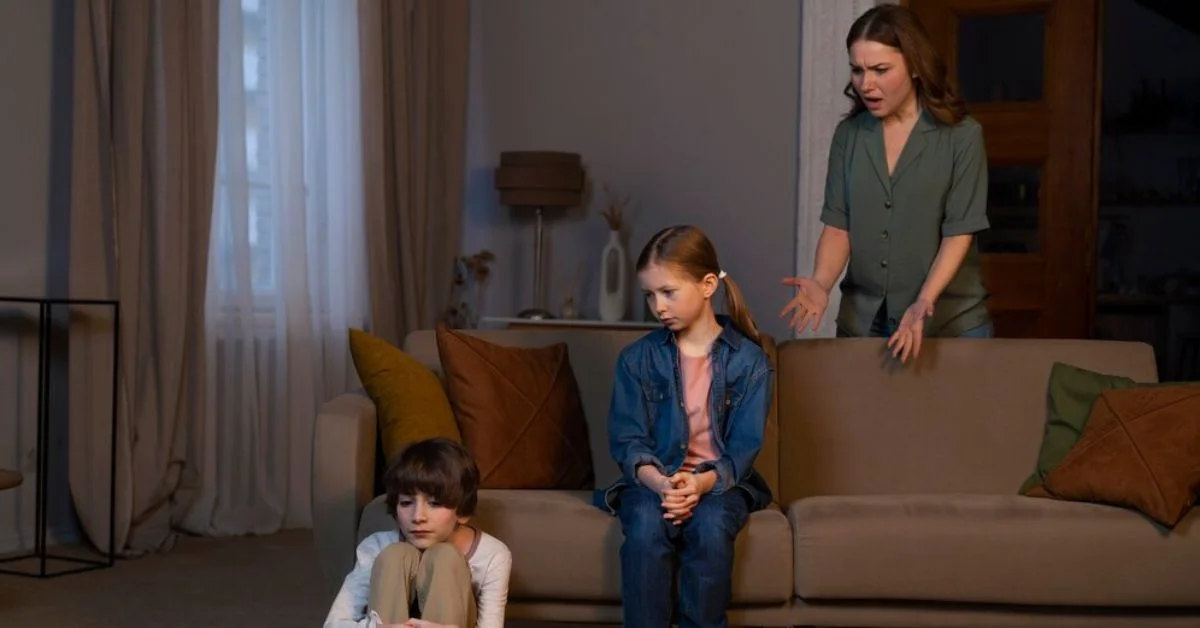GENERAL
The Top Montessori Toys for 3 Year Olds: Encouraging Growth Through Play

By the time your child reaches three years old, they are well into a phase of rapid development. Their curiosity, creativity, and desire for independence are in full swing, making it an ideal time to introduce toys that nurture these qualities. Montessori toys, which focus on hands-on learning and fostering self-reliance, are perfect for this stage of growth. But with so many options available, what are the top Montessori toys for 3 year olds that will best support their development?
Why Montessori Toys Are Ideal for 3 Year Olds
Montessori toys are thoughtfully designed to encourage exploration, problem-solving, and creativity in young children. Unlike many traditional toys that are designed solely for entertainment, Montessori toys are created with a purpose: to help children develop key skills while having fun. For 3 year olds, who are eager to learn and assert their independence, these toys offer the perfect balance of challenge and engagement.
Key Benefits of Montessori Toys for 3 Year Olds
- Fostering Independence: At three years old, children love to do things on their own. Montessori toys are designed to be self-correcting and intuitive, which means children can play independently without needing constant help from adults. This independence boosts their confidence and gives them a sense of accomplishment.
- Enhancing Fine Motor Skills: Many Montessori toys focus on activities that require precise hand movements, such as threading beads, using tongs, or fitting puzzle pieces together. These activities help strengthen fine motor skills, which are essential for tasks like writing, buttoning clothes, and using utensils.
- Supporting Cognitive Development: Problem-solving, sequencing, and sorting are key cognitive skills that are actively developed through play with Montessori toys. Toys like puzzles, sorting games, and building blocks challenge children to think critically and understand concepts like order, size, and shape.
- Encouraging Creativity and Imagination: Open-ended toys like blocks, art supplies, and pretend play sets allow 3 year olds to express their creativity and imagination. These toys don’t have a single “right” way to play, so children are free to invent their own games and scenarios, which fosters creative thinking.
- Promoting Social Skills: Many Montessori toys are designed for cooperative play, helping children learn to share, take turns, and communicate with others. This social interaction is crucial for their emotional development and helps them build important relationships.
Top Montessori Toys for 3 Year Olds
Selecting the right toys for your 3 year old can make a big difference in their development. Here are some of the top Montessori toys for 3 year olds that combine fun with valuable learning opportunities:
- Puzzles and Sorting Games: These toys help develop problem-solving skills and hand-eye coordination. Simple puzzles with large pieces or sorting games that involve matching colors, shapes, or sizes are perfect for this age group.
- Building Blocks and Construction Sets: These timeless toys allow children to explore concepts like balance, symmetry, and spatial awareness. They also encourage creativity as kids build and create their own structures.
- Art and Craft Supplies: Providing your child with art supplies like crayons, paints, and clay allows them to express themselves creatively. These activities are not only fun but also help develop fine motor skills and hand-eye coordination.
- Pretend Play Sets: Toys that mimic real-life activities, such as play kitchens, tool sets, or doctor kits, are excellent for fostering imagination and role-playing. These sets also help children understand the world around them by allowing them to imitate adult behaviors in a safe and playful way.
- Practical Life Toys: Practical life toys, such as child-sized cleaning tools or gardening sets, teach responsibility and life skills. They also provide a sense of achievement as children learn to take care of their environment.
Conclusion
At three years old, children are eager to explore the world around them, and the right toys can make all the difference in their development. Montessori toys offer a unique blend of education and entertainment, encouraging children to learn through play while developing important life skills. By choosing toys that align with your child’s developmental stage and interests, you’re setting them up for success as they continue to grow and discover new things.
GENERAL
How to spruce up your bedroom this spring

With the sunshine starting to make more of an appearance you could use this as an opportunity to refresh your bedroom.
Bedrooms should be calm, peaceful spaces where you can unwind and relax at the end of a busy day. Here are some tips to help you create the ideal tranquil yet stylish space.
Paint
One of the easiest ways to help your bedroom feel brand new is to add a new coat of paint to the walls. Pink is a bit of a divisive colour as it could be viewed as too feminine. A blush pink could be the perfect bedroom choice, however, as it is a warm and nurturing colour. It will also work well with different accents such as greys, white and metallics.
If pink doesn’t feel right to you, you could consider a dark, rich green. Not only does this exude elegance and luxury, but it is also part of the ocean spectrum which feels calming and restoring. If you do opt for green then your furniture should be metallic or glass – this will help to reflect the light and prevent the room from feeling dingy.
Wardrobes
Wardrobes, whilst an integral storage space, do take up a lot of room. Changing them or upgrading them can breathe new life into your sleep space.
If you are on a budget, then you can get creative with paint again. Pick a contrasting colour if you want them to pop, or paint them the same as the walls to help them blend in. If you like a bit of uniqueness, then why not wallpaper the inside surfaces for a brighter surprise that can be hidden when the doors are shut?
Wardrobes should work for you, so make sure they don’t have any wasted space. Look into bespoke wardrobes which can maximise every inch of your room without feeling crammed in.
Bedding
Bedding is such a versatile part of a bedroom. You can change it whenever you like to fit your current mood or aesthetic.
If you feel your room is quite masculine and cold, you can counter that with plush bedding that has a bit more detail to it. If you like the masculine look, however, lean into that and go for one-colour bedding or sets with geometric patterns.
Similarly, minimal bedrooms can be livened up with a colourful, patterned set. You could go crazy and pick one with multiple colours or stick to one bright set. This will help to add a focal point in your room and invite you in to be cosy.
Bedframes
Bedframes are often overlooked when it comes to adding style to a bedroom. There are so many different designs so you will need to think about the features you really want.
Beds with storage underneath are very helpful for smaller rooms – or those with an extensive shoe collection! Being able to hide away items that would normally take up space helps the room to feel cleaner and more spacious.
If you like metal frames then one with a metal headboard gives you space to be creative. You can upholster it to add something different, or go more simple and add a string of fairy lights which are great for late-night reading.
GENERAL
How to Approach the Conversation of Divorce with Your Children

Coming to terms with your separation can be incredibly difficult, and we know that when there are children involved, it can make navigating the whole process even more challenging. For parents, it can often feel daunting to approach the subject, especially if you have younger children who may not be able to fully comprehend what is happening around them.
In this article, we’ll share some advice for parents who are preparing to have a conversation with their children about their separation.
Avoid going into the details
It’s important that when you come to have a conversation with your children, you don’t overwhelm them with any of the finer details of your separation. It can be incredibly tough for children to come to terms with why their parents might no longer want to be together, and you don’t want to give them any opportunity to blame themselves or feel at fault for what has happened.
Instead, stay clear of going into the details, and use language that your children will understand. You can delicately explain that you and your partner are no longer going to be living in the same house, while simultaneously comforting them by letting them know they will still get to spend time with both parents individually.
If your children are older, you may feel more comfortable being more open about the divorce, but it’s still best to avoid going into too much detail about your decision behind the separation.
Offer your children reassurance
A separation brings with it periods of instability and uncertainty, but you want to ensure that your children are impacted as little as possible. Instead, offer them reassurance that, although life may look a little different going forward, everything is going to be okay.
Your children will undoubtedly experience a range of emotions, and as a parent, you should make an effort to validate how they are feeling and encourage them to express themselves. Whether that’s letting them know it’s okay to be upset or respecting their wishes if they want to have some time alone. Just let them know that you will be there for them if they want to talk to you about how they are feeling.
Let them grieve
Divorce can feel like an intense loss for a child, as the life they were once so accustomed to is suddenly and drastically changing right before their eyes. As with grief, there is very little you can do as you navigate the tough weeks and months ahead, but what you can do is be there for your children as they process their emotions.
Take the time to sit down and listen to your children and let them know they are free to speak their minds, even if they are unable to articulate how they are truly feeling. Grief comes in stages, so be prepared that your child may express a range of emotions and behaviours as they adjust to their new normal.
Provide your children with stability
The most important thing you need to make sure your children are aware of is that, no matter what is changing in the world around them, you and your partner are going to be able to provide them with a stable family life and a home where they will feel loved and cared for.
We know it can be tough to find common ground when you are going through a difficult separation, but establishing a concrete co-parenting plan and explaining to your children when they are going to spend time with each parent and what they can expect from their new routines will be hugely beneficial and help you all cope with the changes you are dealing with in an amicable and respectful manner.
If you and your partner think you may benefit from some guidance as you contemplate how to discuss your divorce with your children, you could consider consulting with family law solicitors. They’ll be able to offer you support and advice as you and your partner navigate your divorce and help you approach the conversation of your separation with your children.
GENERAL
5 Factors That Affect Tattoo Removal Success

Welcome to our article on tattoo removal success factors. When considering tattoo removal, it is essential to understand the various factors that can influence the outcome of the process. By being aware of these factors, you can make informed decisions and increase the chances of achieving the desired results in your tattoo removal journey.
Factors influencing tattoo removal are diverse and can have a significant impact on the effectiveness of the treatment. In this article, we will explore the top 5 factors that play a crucial role in determining tattoo removal success.
Understanding these factors will help you navigate through the process and ensure that you have realistic expectations regarding the outcome of your tattoo removal. From the tattoo and your skin characteristics to the treatment techniques used, each factor contributes to the overall effectiveness of the removal process.
By delving into the impact of factors on tattoo removal, we aim to arm you with valuable insights that will empower you to make the best decisions for your tattoo removal journey. So let’s dive in and explore the factors that can influence the success of tattoo removal!
Factors Related to Tattoo and Skin
When it comes to tattoo removal, several factors related to both the tattoo and your skin can impact the outcome of the removal process. Understanding these factors is essential in order to make informed decisions and achieve successful results.
Effect of Skin Type on Tattoo Removal
Your skin type plays a significant role in the effectiveness of tattoo removal. Different skin types may respond differently to the removal treatment, resulting in varying levels of success. For example, individuals with lighter skin tones generally have a higher success rate with tattoo removal compared to those with darker skin tones. This is because laser removal techniques typically target the pigments in the tattoo, and darker skin can absorb more of the laser energy, making it more difficult to remove the tattoo completely.
Impact of Tattoo Age on Removal
The age of the tattoo can also influence the removal process. Generally, older tattoos tend to be easier to remove compared to newer ones. This is because over time, the ink pigments may break down or fade, making it less resistant to removal treatments. However, it’s important to note that the extent of fading can vary depending on factors such as the type of ink used and the depth at which the tattoo was originally applied.
Effects of Tattoo Color on Removal
The color of the tattoo can significantly impact the outcome of the removal treatment. Darker colors, such as black or navy, are generally easier to remove compared to lighter colors like yellow or pastel shades. This is because darker pigments absorb more laser energy, allowing for more effective targeted removal. Lighter colors, on the other hand, may require additional sessions or alternative removal techniques to achieve satisfactory results.
Treatment Techniques and Professional Expertise
In the field of tattoo removal, various techniques are employed to effectively eliminate unwanted tattoos. The most widely recognized and successful method is laser removal. Laser tattoo removal involves using laser technology to break down the pigments of the tattoo ink in order for the body to naturally eliminate them.
Laser removal stands out as one of the most efficient and reliable methods for tattoo removal due to its ability to selectively target the tattoo pigments without causing significant damage to the surrounding skin. The laser emits light energy that is absorbed by the tattoo ink, causing it to break into smaller particles that can then be flushed out of the body.
However, it is important to note that the effectiveness of laser removal can vary depending on factors such as tattoo size, color, age, and location on the body. Darker-colored tattoos, for instance, are generally easier to remove compared to lighter-colored ones.
Additionally, the success of tattoo removal heavily relies on the expertise and skill of the professionals performing the procedure. Qualified technicians and dermatologists possess the knowledge and experience needed to evaluate the specific characteristics of your tattoo and skin, determine the appropriate laser settings, and tailor a treatment plan that maximizes effectiveness while minimizing potential side effects.
Professional expertise is essential in ensuring the proper application of tattoo removal techniques, reducing the risk of complications such as scarring, hyperpigmentation, or incomplete removal. By entrusting your tattoo removal journey to a licensed professional, you can have peace of mind knowing that you are in capable hands, increasing the likelihood of achieving optimal results.
Conclusion
In conclusion, successful tattoo removal is influenced by various factors that need to be taken into consideration. The type of skin, age of the tattoo, and color of the ink are all significant determinants of the final outcome. Understanding how these factors impact the removal process will help you make informed decisions and manage your expectations effectively.
Moreover, choosing the appropriate treatment technique is crucial for achieving the desired results. Laser removal, for example, has proven to be highly effective in many cases. However, it’s essential to consult with a qualified professional who can assess your specific situation and recommend the most suitable method. By acknowledging the importance of these factors and seeking professional expertise, you can increase the likelihood of successful tattoo removal. Remember, the goal is not only to remove the tattoo but also to achieve the desired results and restore your skin’s appearance. So, take the time to research, consult with experts, and carefully consider your options before embarking on your tattoo removal journey.

 ENTERTAINMENT1 week ago
ENTERTAINMENT1 week agoExploring the Kristen Archives: A Treasure Trove of Erotica and More

 TECHNOLOGY4 months ago
TECHNOLOGY4 months agoBlog Arcy Art: Where Architecture Meets Art

 LIFESTYLE1 week ago
LIFESTYLE1 week agoWho Is Sandra Orlow?

 LIFESTYLE4 months ago
LIFESTYLE4 months agoThe Disciplinary Wives Club: Spanking for Love, Not Punishment

 ENTERTAINMENT5 days ago
ENTERTAINMENT5 days agoKiss KH: The Streaming Platform Redefining Digital Engagement and Cultural Currents

 GENERAL4 months ago
GENERAL4 months agoWhat are stories of male chastity? A Comprehensive Guide

 HOME IMPROVEMENT2 days ago
HOME IMPROVEMENT2 days agoGet Your Grout to Gleam With These Easy-To-Follow Tips

 GENERAL5 months ago
GENERAL5 months agoSmartSchoolBoy9: The Rise of a Viral Chasing Kid Sensation










